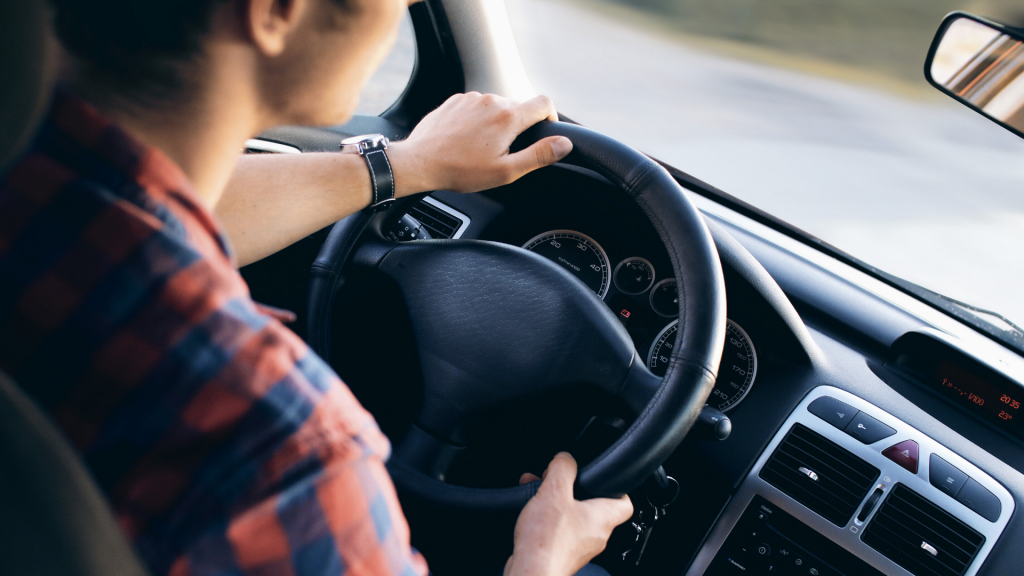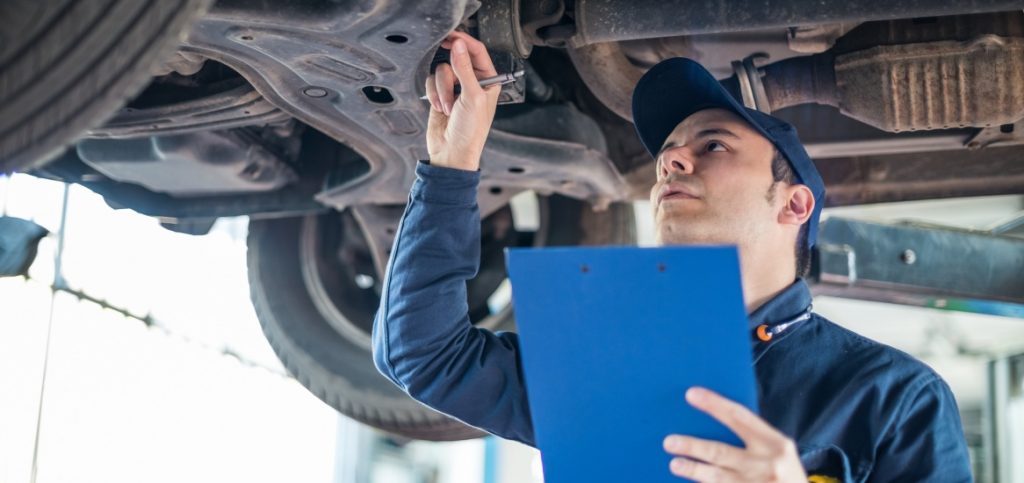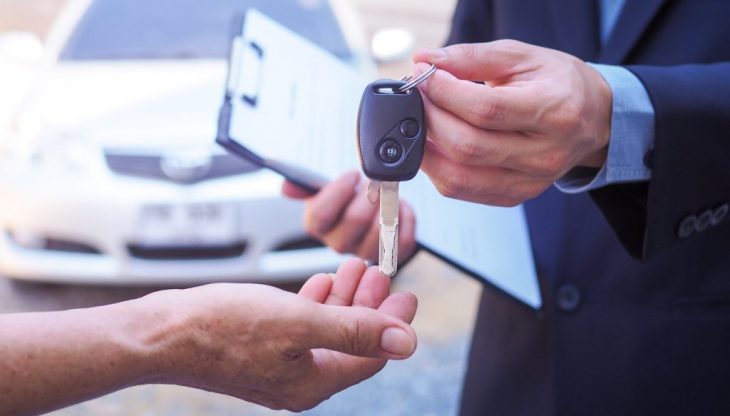
How to Buy a Used Car in 10 Easy Steps
If you’re looking to buy a used car, you’re far from alone nearly 40 million used vehicles change hands each year. Here is our used car buying guide for South Florida drivers.
With so many choices, finding that one right car for you can be a challenge. So we’ve created a list of steps to help make finding
and buying your perfect used car a breeze.
1: How Much Car Can You Afford?
A rule of thumb: If you’re taking out a loan to pay for your car, your car payment shouldn’t be more than 20% of your take-home pay. If you’re sticking to a tight budget, you may want to spend even less. Used cars will need a little extra attention from time to time: new tires, maintenance and the like. And then there are the other ownership costs shoppers sometimes forget to account for, such as fuel and insurance.
If the car you’re planning to buy is out of warranty, it might be a good idea to set aside a “just-in-case” fund to cover any unexpected repairs.
Check to see how much you are approved for with our quick and easy pre approval finance application here at Wallace Auto Group.
2: Build a Target List of Used Vehicles
It’s no secret that the Chevrolet Jeep and the Kia Sportage make for good used cars. But they might cost a few thousand more than a comparable Hyundai Elantra or Kia Optima, even though these are good cars too. So if you’re looking to save money, consider more than one brand. We suggest making a list of three cars that meet your needs and fall within your budget. Wallace reviews have great information to guide your choices.
If you’re planning to buy a vehicle that is less than 5 years old, consider one that’s certified pre-owned (CPO). CPO vehicles have long-term warranties that are backed by the carmaker, not just the dealership selling it to you. Franchised dealerships that sell that same brand new are the only ones who can sell a CPO car of the same brand. So if you wanted a CPO Chevy Malibu, for example, you’d need to buy it from a local South Florida Chevy dealer.
3: Check Prices
Prices are driven in part by where you’re shopping. You’ll find used cars in used car sections of new car dealerships, independent used car lots,
used car retailers such as EZPAY Cars, and websites where private-party sellers list their cars. Of the four, private-party cars will typically have
the lowest selling price. CPO cars will usually cost the most, but for the reasons we’ve noted. To see what other people are paying for the models
you’ve picked out, Wallace Auto Group offers a quick way to see the average price paid for the car in your area.
4: Locate Used Cars for Sale in Your Area
One easy place to start building your target list is the Wallace Auto Group used car inventory page. To find exactly the car you want, you can filter your search by many factors, including the miles on the car’s odometer, its price and features, and dealer’s distance from you. Use the websites for other used-car marketplaces mentioned to save time.
5: Check the Vehicle History Report
Unless you’re buying the car from a close friend or family member who can vouch for its history, plan to get a vehicle history report. This early step is essential. If the car you’re looking at has a bad history report, the sooner you know the better.
AutoCheck and is the best-known source for vehicle history reports. These reports can reveal vital information about the car, including whether the odometer has been rolled back or if it has a salvage title, which means it has been declared a total loss by the insurance company. You’ll use the car’s vehicle identification number (VIN) to get this information, and in some cases, all you need is the license plate number. Most major dealers offer these reports for free if they have the vehicle in their inventory.

6: Contact the Seller
Once you find a good prospective car, don’t run out to see it. Call the seller first. This step is an excellent way to establish a relationship with the seller and verify the information about the car. You can ask private-party sellers why they’re parting with a car or whether it has any mechanical problems. And if you’re buying from a dealer, a phone call or text is the best way to ensure the car is still in stock. You can even reach out to the dealership via social media or Google My Business listing.
Sometimes the seller will mention something that wasn’t in the ad that might change your decision to buy the car. If you want to go deeper, our used car questionnaire is a good reminder of what to ask. You will notice that the last question on our list is the asking price of the car. Although many are tempted to negotiate even before laying eyes on the car, it’s better to wait. Once you see it, you can tie your offer to its condition.
If things are going well, set up an appointment to test-drive the car. If possible, make it for daylight hours. That makes it easier to see the car’s condition.

7: Test-Drive the Car
Test-driving a used car is the best way to know if this is the right car make and model for you. It’s also a good way to assess this particular car’s condition. So tune out distractions and focus on the car. Here are some things to check:
- Is it easy to get in and out of the car without stooping or banging your head?
- Is there enough headroom, hip room and legroom? Remember to check the space in the back seat too.
- Is the driving position comfortable? Do you sit too low, too high or just right in the car? Can you tilt or telescope the steering wheel for a better fit?
- Are the seats comfortable? Are they easily adjustable? Is there a lumbar support adjustment for the driver? How about the front-seat passenger?
- Is the check engine light on? If so, get that problem checked out before buying.
- How is the visibility? Check the rearview mirror and the side mirrors. Look for potential blind spots.
- Use your nose. Do you smell gas, burning oil or anything amiss?
- Check out the tires. How old are they? Is there enough tread left?
- How are the brakes? Are they doing the job of stopping the car? Do they squeak?
- Pop the hood. You don’t have to know a lot about cars to see if something looks wrong. If something is leaking, steaming or covered in oil, it’s time to ask questions.
- Does the air conditioning blow cold? Do headlights, brake lights and turn indicators work? Test them to be sure.
After the test drive, ask the owner or dealership if you can see the service records. These will show you if the car has had the scheduled maintenance performed on time.

8: Have the Car Inspected
If you like the car, consider having a mechanic inspect it before you buy it. If you don’t have a mechanic, Google and Yelp are good places to read local shops’ reviews. A pre-purchase inspection costs between $100-$200 and can alert you to problems you may not find yourself. It’s a smart investment that we definitely recommend doing before you finalize your purchase.
A private-party seller will probably allow you to do this without much resistance. Most dealerships will let you borrow a car for an outside mechanic to inspect. You’ll be paying for this, of course. If it is a CPO car, there’s already been an inspection and the car has a warranty, so there is little reason to take it to an independent mechanic.

9: Negotiate a Good Deal
Does the idea of “talking numbers” fill you with dread? It shouldn’t. Negotiating doesn’t have to be a drawn-out, traumatic experience. If you are reasonable and have a plan, chances are you can make a deal pretty quickly and easily:
- Decide ahead of time how much you’re willing to spend to get the car. But don’t start with this number in your discussion.
- Make an opening offer that is lower than your maximum price, but in the ballpark based on your average price paid research in Step 3. Explain that you’ve done your research on Edmunds or wherever else, so you have facts to support your offer.
- If you and the seller arrive at a price that sounds good to you and is near the average price paid, you’re probably in good shape.
- And remember, the people on the other side probably dislike negotiating too — even if it’s their job.
- Get a monthly payment, low interest rate, and ideal auto loan with the negotiation process.
10: Get the Paperwork Done
If you are at a dealership, you’ll sign the contract in the finance and insurance office. There, you will likely be offered additional items such as a warranty, anti-theft devices, prepaid service plans or fabric protection.
Some people want the peace of mind that comes with extended warranties, so this is something you might want to consider unless the car is still under the manufacturer’s warranty or is a CPO vehicle. Review the dealership sales contract thoroughly. In most states, it lists the cost of the vehicle, a documentation fee, possibly a small charge for a smog certificate, sales tax and license fees.
If you are buying a car from an individual owner, make sure the seller properly transfers the title and registration to you. It’s important to close the deal correctly to avoid after-sale hassles. Before money changes hands, ask for the title (which is sometimes called the pink slip) and have the seller sign it over to you. Rules governing vehicle registration and licensing vary from state to state. If possible, check with your local department of motor vehicles to make sure there are no past-due registration fees you’d be responsible for should you buy the car. Whether you buy from a dealer or a private party, make sure you have insurance for the car before you drive it away.
Once you’ve done the paperwork, it’s time to celebrate your new purchase — maybe with a drive-thru dinner. You deserve it!




